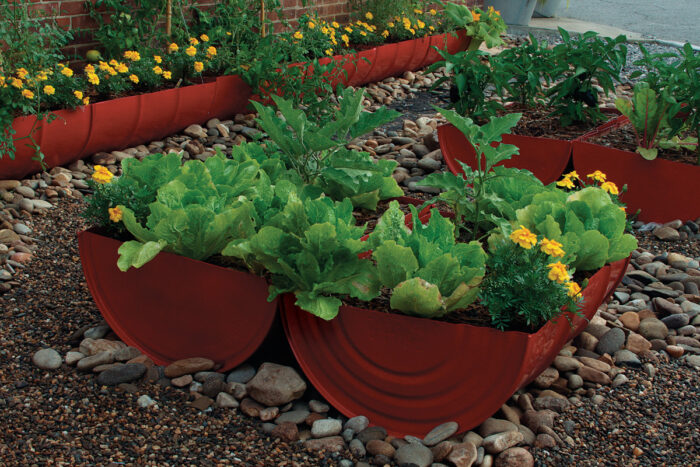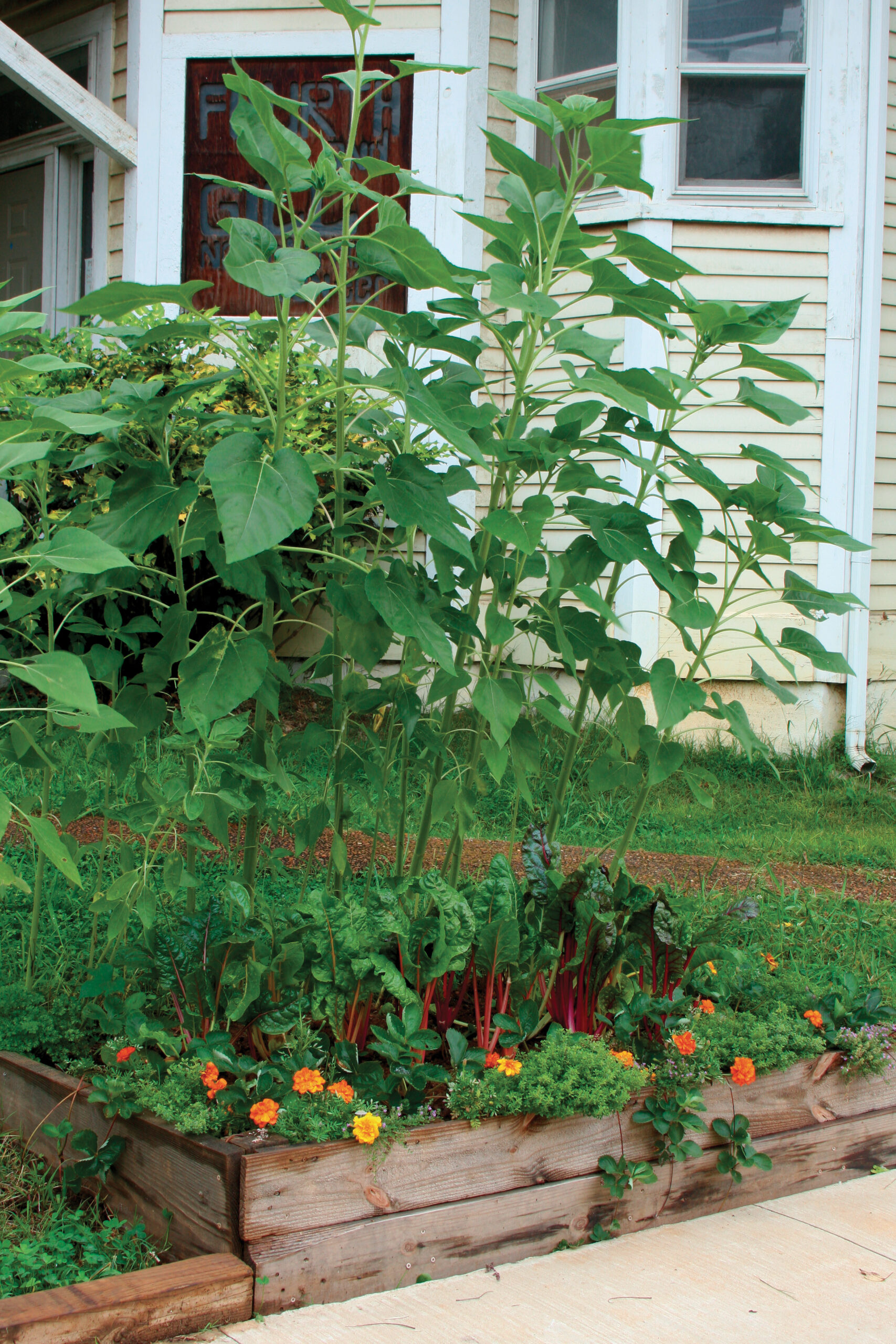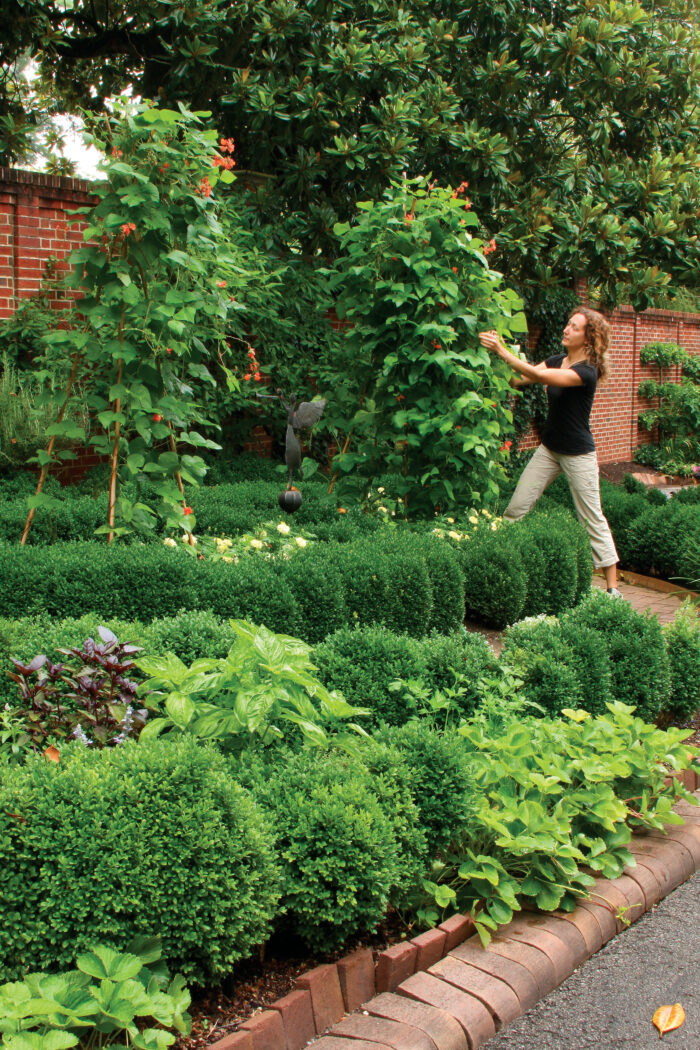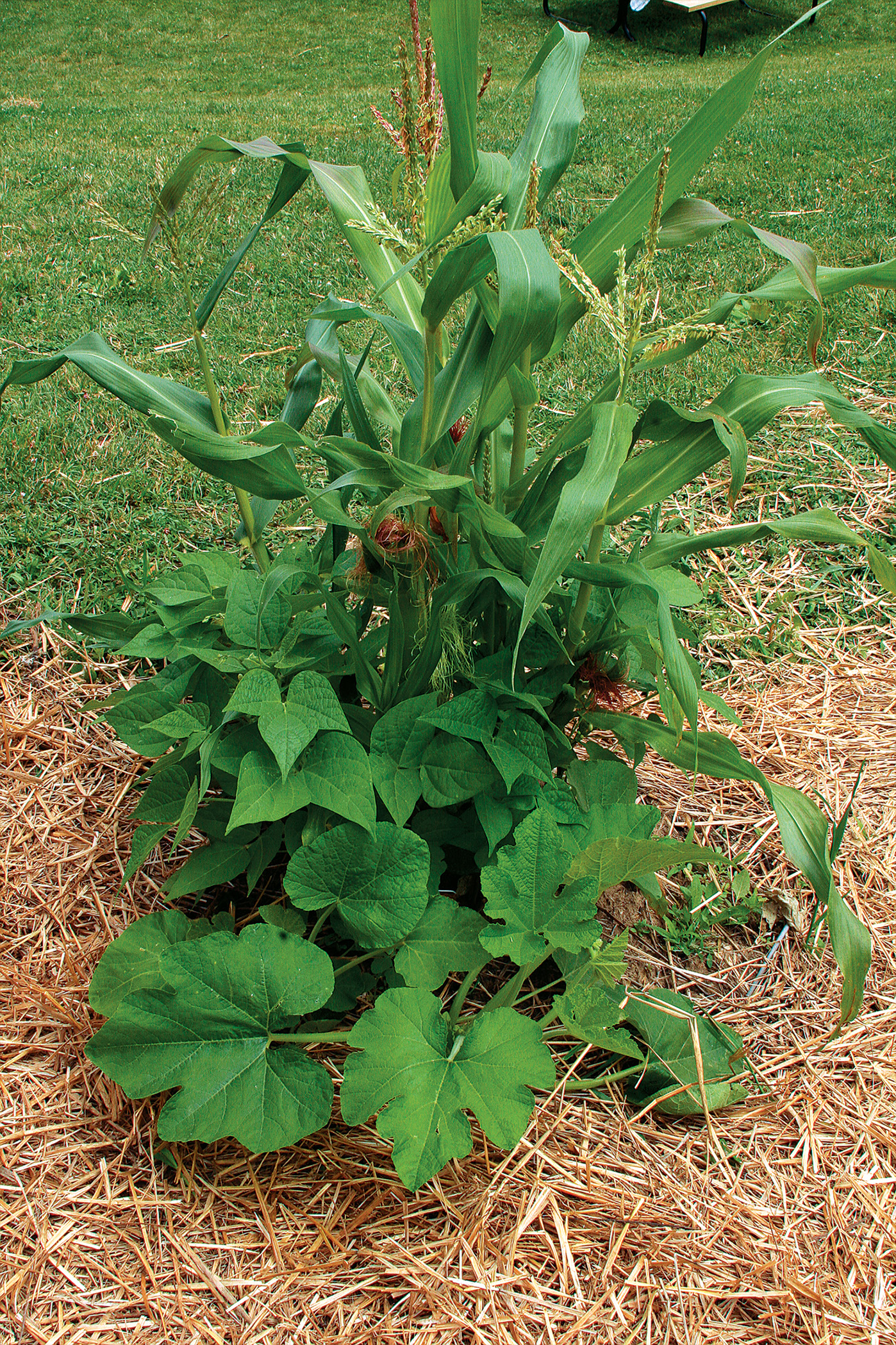Finding Space for Veggies in a Small Yard
Any sunny place is the right place to grow your favorite edibles

Lately, there seems to be a lot of farmer envy in the gardening world. The recent locavore (eat locally grown food) trend, food-contamination scares, and the high price of produce have many grasping the shovel and looking at their lawns with a hungry gleam in their eye. Self-sufficiency and the desire to grow our own food for pleasure and health is appealing, but not all of us have a lawn that we can (or want) to convert into a big vegetable garden. If you work creatively within your means, however, you might find that the joys of a small-space veggie garden far outweigh the expense and hard work of a larger garden. Whether your limited resources include a tiny patch of earth, a sunny driveway or balcony, or the existing landscape around your home, you can use the following techniques to get up close and personal with your food supply. And as a bonus, you’ll find that it’s much easier to stay on top of weeding, watering, and pest management if your crops are a reasonable size.

Raised beds can fit anywhere
Perhaps you have a sunny patch of ground available, but you don’t want to go through the trouble of digging into and amending the hard-packed earth. Or maybe you rent your home, and your landlord doesn’t want you digging up the yard. Gardening in a raised bed is a simple way to get the maximum yield from a small area without having to disturb the soil beneath. I like to think of a raised bed as my own personal salad bar, which can fit just about anywhere—as long as it’s in full sun.
But what if the only place you have plenty of sun is your driveway? No problem. You can build a raised bed on top of concrete or asphalt. The key is to create a barrier between the impervious surface and the soil that your veggies are growing in to provide proper drainage, block contaminants, and keep your plants from cooking on the hot surface. Shovel a layer of wood chips several inches thick onto an area 2 feet wider and longer than your raised bed. Keep the chips in place by edging the area with bricks or stones. Center the box accordingly, then place a layer of cardboard along the bottom to keep the soil from washing out and to prevent asphalt oils from coming in contact with the soil. Then, fill the bed with soil that is free of weed seeds.
I used this technique last year to build one of my signature salad-bar gardens on top of a thin parking strip alongside a sidewalk. To construct the bed, I used 8-inch-wide, rot-resistant cedar planks. I avoid using pressure-treated wood because it contains chemicals that can leach into the soil. I stacked two of the boards on top of each other to create a depth of 16 inches. The deeper the bed, the more room that plants have to spread out their root systems (leading to better health) and the less watering you’ll have to do. I made my box sturdy by attaching 2×2 posts to each corner.

You can make your bed as long and as wide as your space can accommodate. Mine ended up being 6 feet long and 4 feet wide. Keep in mind that the bed should be narrow enough so that you can comfortably reach into the center from either side. This allows you to tend your garden without stepping into it and compacting the soil. In this one small bed, I planted a wide array of veggies, herbs, and edible flowers—enough to make a luscious and vibrant salad for lunch or dinner on a daily basis.
And remember, containers are just another form of a raised bed. Depending on how much or how little space you’ve got, you can use traditional clay pots, wooden fruit crates, galvanized-steel garbage cans, or plastic buckets—anything that holds soil will work as long as you can drill holes in the bottom.
The key to success is intensive planting
To get the biggest possible harvest from your containers and small raised beds, you need to ignore traditional spacing requirements. Don’t get me wrong: I still allow room for my plants to grow, but I often take what the plant label says and cut it in half. Spacing requirements are usually based on traditional, in-ground gardens consisting of long, single rows spaced at least 3 feet apart so that farmers can navigate machinery up and down the rows. An intensively planted garden keeps wasted space to a minimum. Also, crops that are continually harvested—for example, lettuce, chard, and herbs—are always being pruned and rarely reach their full-grown size, so they can be placed close together. Placing your plants closer to each other also crowds out weeds and protects your soil from the drying effects of the sun and wind.

At the center or rear of your container or raised bed, plant things that like to climb—such as tomatoes, cucumbers, and peas—to save space and to keep fruit off the ground. Even vines with heavy fruit, like squash or melons, can be trained upward on a bamboo tepee or railing. Use sections of panty hose or old dish towels, and make little hammocks to support the fruit as it grows.
To save even more room, sprinkle some lettuce, spinach, or arugula seeds around the base of tall edibles, like dill, fennel, peppers, and eggplant. The greens will sprout quickly and thrive in the shade produced by their taller neighbors when the weather gets hot. Creepers—like strawberries, tomatillos, thyme, and nasturtium—make good perimeter plants because they take up minimal amounts of space by cascading over the sides of containers and beds.
Embed edibles with ornamentals
If you’re not sure you want to commit to maintaining raised beds or containerized veggies, you can incorporate edibles into the existing landscape around your home. Many edibles with notable colors, textures, or forms can be used in place of ornamentals.
Ornamental gardens often lack vertical accents. To add a tall twist to an otherwise flat garden, I like to build tepees and grow a variety of beans or peas on them. Many members of the legume family have not only delicious edible pods but also beautiful flowers and lush foliage. Unless your garden contains tropical foliage, you are probably in need of some plants with bold forms, as well. I like to mix in some broad-leaved squash in ornamental gardens to add impact. And when it comes to texture, I love to tuck in the puckered leaves of lacinato kale or the fuzzy fronds of artichokes. Red or rainbow chard has a cool texture as well as vibrant coloring. My other favorite plants to use for their standout hues are ‘Red Sails’ lettuce and purple basil. Why plant green when you can have the same great taste with a brighter-colored option?

Remember that the blooms of many herbs last longer and are more eye-catching than many ornamentals. Onions and garlic chives display globes of tiny blossoms in spring that rival any ornamental allium in beauty. Hardy herbs—such as rosemary, sage, and lavender—can easily take the place of evergreens in warm zones, whereas thyme and wintergreen (Gaultheria procumbens, USDA Hardiness Zones 3–8) make fragrant and delicious ground covers. But my favorite edible addition to existing landscapes are blueberries: Replace any deciduous shrub with a blueberry bush for beautiful fall foliage and pretty white flowers in spring; the delicious berries are a bonus.
With so many different options, there’s no reason (or excuse) not to find space for at least a few vegetables. With a bit of creativity and some effort, you can have access to fresh, mouth-watering food for much of the year—something an ornamental grass can never provide.
Create the perfect veggie partnership

Certain vegetables, when planted together, can help each other out. One of the most famous partnerships, called “the Three Sisters,” groups beans, corn, and squash together. But there are numerous other beneficial partnerships in the veggie world as well as some bad pairings to avoid.
Good pairings
Asparagus and parsley: Parsley repels the dreaded asparagus beetle.
Nasturtium and squash: Nasturtium repels squash bugs.
Eggplant and lima beans: Lima beans deter the Colorado potato beetle, which destroys eggplants.
Bad pairings
Tomatoes and potatoes: Both are prone to blight and often infect each other with the disease.
Corn and tomatoes: They attract the harmful tomato hornworm and corn earworm, which destroy fruit.
Cabbage and lettuce/strawberries: Cabbage competes for the same nutrients as lettuce and strawberries.
—Sarah Bush is the owner of Edible Revolution, a kitchen-garden design and installation firm in Knoxville, Tennessee.
Photos: Danielle Sherry. Illustration: Martha Garstang Hill





Comments
Log in or create an account to post a comment.
Sign up Log in